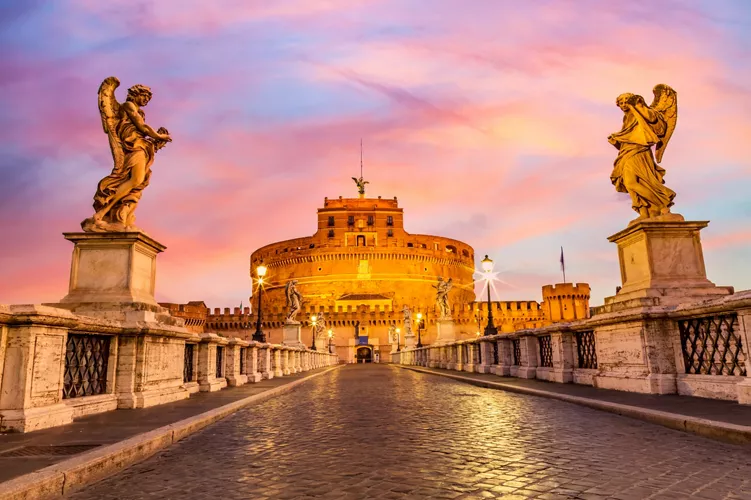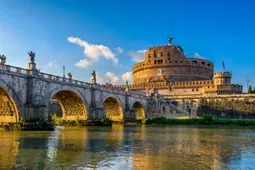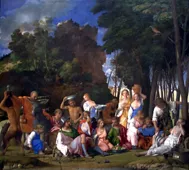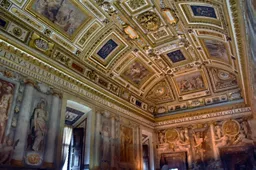This content was automatically translated. View the original text.




Overview
The fortress on the right bank of the Tiber
A walk at sunset along the right bank of the Tiber, all the way to the bridge of the same name...to then be surprised and amazed by the majestic Castel Sant'Angelo fortress!
It stands between the Borgo and Prati districts, very close to Vatican City to which it is connected by the fortified corridor of the "Passetto". This elevated passageway, entering the Vatican Walls, led directly to the Vatican Palaces, allowing the Pope to find refuge in the Castle if required. At the same time it was also an observation bastion for the Rione. The Passetto is open to the public at certain times of the year.
The current name of the fortress refers to the bronze statue of Archangel Michael placed on top of the Mole Adriana and erected in 590 by Pope Gregory I to show his gratitude for the victorious battle with a serious plague that had scourged the city.
Castel Sant'Angelo, formerly known as Mole Adriana, was built by Emperor Hadrian as a mausoleum for himself and his family around the year 123.
In 136 A.D. Emperor Aelius Hadrian connected the Mole to the city with the Aelius Bridge. The bridge, now commonly called Ponte Sant'Angelo, has been modified many times until taking on its present appearance thanks to Clement IX who commissioned Bernini to design statues of angels bearing the symbols of the Passion of Christ.
Over time, the Mole has undergone various phases and extensions, to then be used as a fort and the papal seat. A visit inside the walls allows you to rediscover its many facets, containing inside, in addition to the mausoleum, also the historical prisons and Renaissance environments.
Since 1925 it has been the seat of the National Museum of Castel S. Angelo and houses art and history collections as well as relics of the Italian Army in a monumental setting restored for the occasion.
full price - €12
reduced - €2
full price - €12
reduced - €2